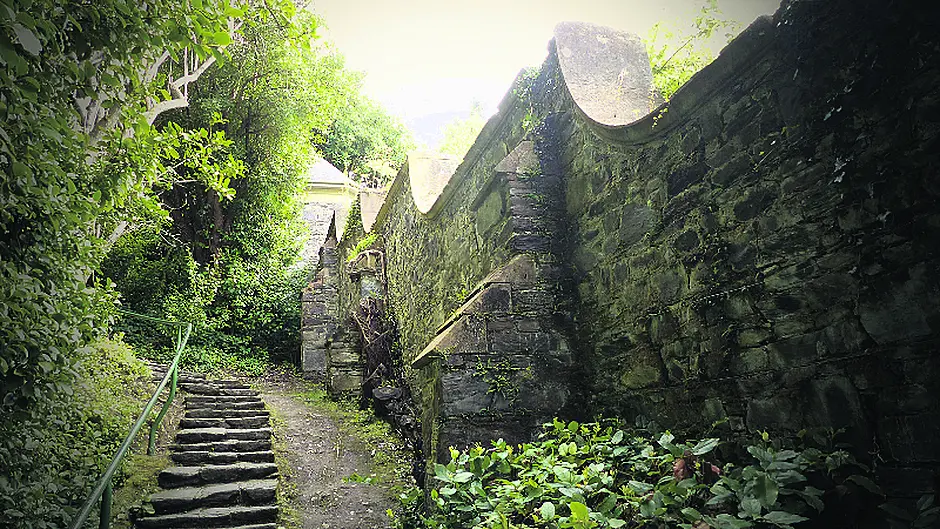The summer’s over. But don’t let that stop you discovering the many magical locations on our doorstep. In the first of a series of local landmarks, Jackie Keogh pays a visit to Garinish Island
THE phrase ‘It’s not the destination, it’s the journey’ was made for places like Garinish Island.
At the waters edge in Glengarriff, you can wait at a limpid and wonderfully soporific place called ‘The Blue Pool’ before boarding a ferry that glides past small ‘des res’ islands, inhabited by seals, and take in the beauty of a harbour that would not be out of place in the Mediterranean.
My first visit to this island paradise invoked such a natural high that the images were burnished in my mind – so much so that the return journey was approached with a degree of trepidation. What if my second island outing couldn’t live up to expectation?
I shouldn’t have worried because the long-range views from the lofty heights of the Martello Tower made me smile once again, as did the childish hops on the stepping-stones in The Happy Valley. Drunk, too, on blossoms, and dazed from daydreaming, I am happy to report my recent visit was every bit as memorable.
What I had not anticipated, though, was what a visit to Bryce House – which was officially opened last October – would do to my imagination. Kathleen, our tour guide, put her finger on it when she said: ‘It’s a very living story.’
If you want chapter and verse, please go to the island and book a tour. For me – the daydreaming part – I was taken by the story of the house and its inhabitants in the same way that Downton Abbey and Death Comes To Pemberley have the power to beguile.
It’s a story of how John Annan Bryce, a Belfast-born MP, and his wife Violet, decided to buy the island and create a retreat away from their ten-bedroom home in London.
Bearing in mind that some of Violet’s cousins included none other than Eva Gore-Booth, the Irish poet and dramatist – who was also a committed suffragist and labour activist – and Constance Gore-Booth, better known as Countess Markievicz, you get an idea of how demanding their social life in London must have been.
The death of their youngest son may also have influenced their decision to buy the 37-acre island and create a garden unlike any other with the help and inspiration of the Edwardian landscape architect and garden designer, Harold Peto.
The salt content in the air undid a lot of their early best efforts but help was on the way when Murdo MacKenzie responded to an advertisement placed in the “Gardener’s Chronicle” and set about creating the shelter belt that allowed the garden, as it is today, to flourish.
At the start of the tour of what was once the gardener’s house there is a life-size portrait of Violet and her four children, next to her husband, John Annan Bryce. The guide mentioned their 20-year age gap and that John Annan’s millionaire status was decimated following the Russian revolution. As a couple, they had engaged Harold Peto to design a seven-storey mansion from basement to roof, but that was no longer possible.
So Violet, following the death of her husband in the early 1920s, decided to make her income by opening the gardens to the public.
Her son, Roland Bryce, had enjoyed a distinguished career with the British Foreign Office but gave all that up to return and live out his days on Garinish Island.
But what makes all of this ‘a living story’, as Kathleen so rightly put it, is that a local woman features prominently in the story. She was Margaret O’Sullivan, better known as Maggie.
Maggie was just 15 when she arrived on the island to be Violet’s lady’s maid. And it is in the final room on the hour-long tour that you see the last three inhabitants of the island – Roland, Murdo and Maggie – all staring down the lens of a camera.
Here, you have to give pause and acknowledge that everything in this room – from Murdo’s tweed jacket, hanging in the closet, to the very picture itself – was once lovingly wrapped and stored by an elderly Maggie.
Maggie, too, had lived out the last of her days in the house until 1999 when – at the age of 91 – she died. For 12 years, after her death, the house was boarded up and bolted shut. It was only when it was opened to allow the restoration works to take place that they found Maggie had left the island of Ireland a treasure trove.







